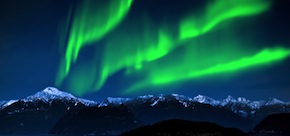As tough as times can be, it’s always worth remembering that we live in a wonderful world – literally. Many wonders are well known, and it’s not inconceivable that many are still undiscovered. Some of these inspirational world wonders are man-made, while others are naturally occurring. Here’s a look at some of the latter.

Ha Long Bay
Situated in the Gulf of Tonkin, Vietnam, Ha Long Bay includes around 1600 islands and islets that form a spectacular display of 500 million-year-old limestone pillars. Most of the islands are uninhabitable due to harsh terrain, and as a result, are unaffected by human interference. The bay is home to a multitude of native floral and faunal species, and has evidence of prehistoric human activity dating back tens of thousands of years.

Puerto Princesa Underground River
The stunning Puerto Princesa Subterranean River National Park is a protected area of the Philippines, southwest of Manila. The park’s unspoilt old growth forest, fascinating wildlife, pristine white, sandy beaches, and remarkable beauty make it one of the most impressive cave systems in the world.

Parícutin
Parícutin is a cinder cone volcano located in Michoacán, Mexico, and is part of the ‘Ring of Fire’, which has 452 volcanoes and is home to over 75 per cent of the world’s active and dormant volcanoes. Parícutin is especially unique in that humans have been able to witness – and study – its evolution from creation to extinction.

Iguazu Falls
Iguazu Falls is one of Argentina and Brazil’s most sought after touristic destinations, and for good reason. The falls are home to over 2000 species of plants, 400 species of birds, as well as 70 mammals. Undoubtedly, the most majestic of the Iguazu Falls, the U-shaped Garganta del Diablo – or ‘Devil’s throat’ – is 82 metres high, 150 metres wide and 700 metres long, while the rest of the falls average around 64 metres high.

Aurora
Auroras are a spectacular display of naturally occurring lights that create fascinating patterns in the sky. They sometimes take the form of a strange glow that lights up the horizon, but often also appear as colourful, luminescent waves that dance across the sky. In the Arctic region, the effect is known as the Aurora Borealis, or Northern Lights; whilst in the Antarctic, it is known as the Aurora Australis, or Southern Lights. Both share almost identical features and changes that occur simultaneously in both the northern and southern auroral zones.

Grand Canyon
The Grand Canyon, located in Arizona, USA, is certainly a most remarkable natural wonder that is also home to many Native American settlements that have existed for thousands of years. The canyon was carved over the past six million years by the mighty Colorado River, making it one of the deepest gorges on the planet, with an average depth of 1.6km and an average width of 16km.

Great Barrier Reef
Quite possibly the grandest natural wonder in the world, the Great Barrier Reef is also the largest coral reef in the world, and includes more than 900 islands over 2900 distinct reefs. As well as being home to one of the most diverse ecosystems in the world, the reef is also the world’s largest formations created by living organisms, making it the only wonder of nature that may be seen from outer space.
Would you like to witness these spectacular sights firsthand? Or have you already been to any of these places? What did you think of them? Do you have any favourite places you’ve visited that aren’t on this list? Why not share them?

